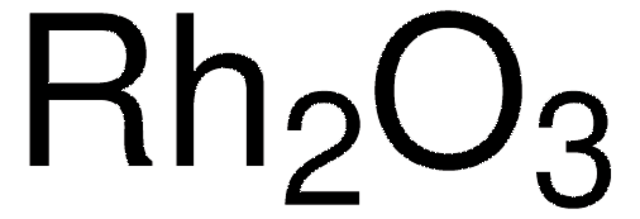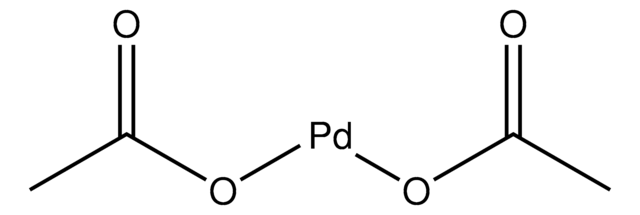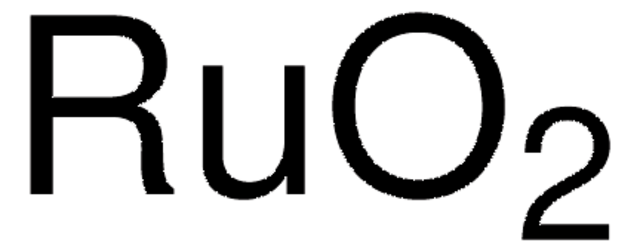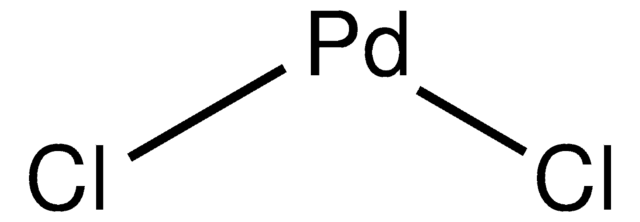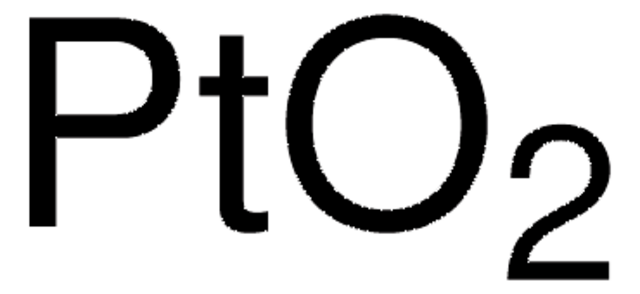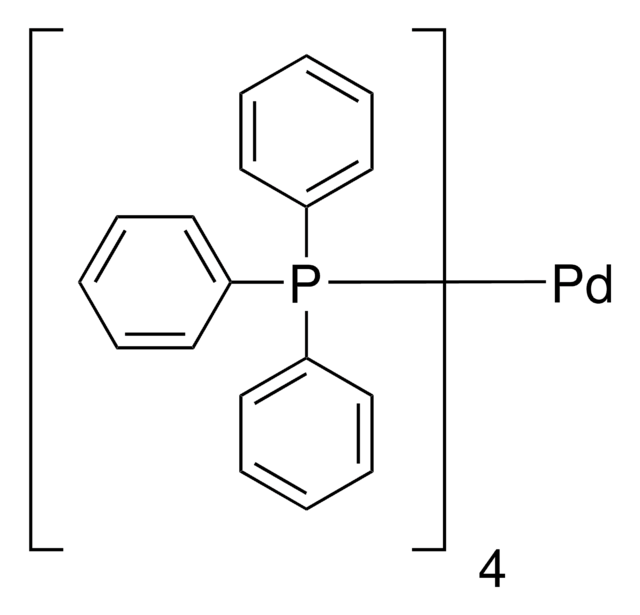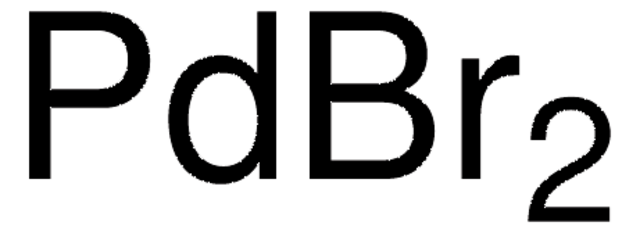520748
Palladium(II) oxide
99.97% trace metals basis
Synonym(s):
Palladium monoxide, Palladium oxide
About This Item
Recommended Products
Quality Level
Assay
99.97% trace metals basis
form
powder and chunks
composition
Pd, 85-87%
reaction suitability
reagent type: catalyst
core: palladium
mp
870 °C (lit.)
density
8.7 g/mL at 25 °C (lit.)
SMILES string
O=[Pd]
InChI
1S/O.Pd
InChI key
HBEQXAKJSGXAIQ-UHFFFAOYSA-N
Looking for similar products? Visit Product Comparison Guide
General description
Application
Signal Word
Danger
Hazard Statements
Precautionary Statements
Hazard Classifications
Ox. Sol. 2
Storage Class Code
5.1B - Oxidizing hazardous materials
WGK
WGK 3
Flash Point(F)
Not applicable
Flash Point(C)
Not applicable
Personal Protective Equipment
Choose from one of the most recent versions:
Certificates of Analysis (COA)
Don't see the Right Version?
If you require a particular version, you can look up a specific certificate by the Lot or Batch number.
Already Own This Product?
Find documentation for the products that you have recently purchased in the Document Library.
Our team of scientists has experience in all areas of research including Life Science, Material Science, Chemical Synthesis, Chromatography, Analytical and many others.
Contact Technical Service
